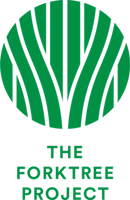Rare Chequered Copper Butterfly at Forktree
One of our main aims at The Forktree Project is to protect and enhance the biodiversity of the site and the wider area. With this in mind, we have commissioned a Bird and Lepidoptera (butterflies and moths) survey of the property so that we have a baseline against which we can draw comparisons as our plantings mature.
The survey will be completed over the course of a full calendar year to give us a full picture of which species live at Forktree during the different seasons. We will share findings as they come up.
We’ve only just started, and it’s already exciting! The following excerpt is from the first report:
“With the commencement of the Bird and Lepidoptera survey this autumn, 7 butterfly species have already been identified within the Forktree Project's premises. A particular highlight was the observation of several Chequered Coppers (Lucia limbaria). This species has experienced a large population decline in South Australia, particularly within the Mount Lofty Ranges and has since been considered rare in the state.
“Like its better-known relative, the Common Grass Blue (Zizina labradus) (which has also been recorded), the Chequered Copper has a symbiotic relationship with ants. In its larval stage, the Chequered Copper is protected from predators and potential parasites by common black ants (Iridomyrmex sp.) which also benefit by feeding on drops of sugar and protein produced by the Chequered Copper larvae. Interestingly, Chequered Copper adults produce the same pheromones as their larval attendant ants and are therefore rarely attacked.
“Several food plants (Oxalis sp.) were also identified on the property which shows that the coppers seen may be breeding on the property.”
A Chequered Copper butterfly (Lucia limbaria) on The Forktree Project site.

